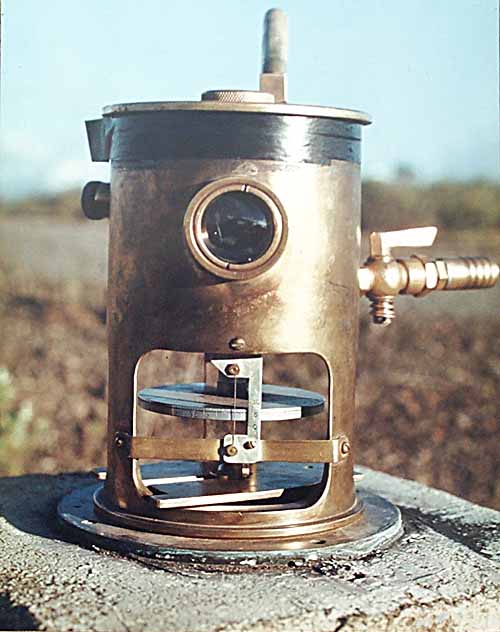|
Differential Settling
Settlement is the downward movement or the sinking of a structure's foundation. It is mostly caused by changes in the underlying soil, such as drying and shrinking, wetting and softening, or compression due to the soil being poorly compacted when construction started. Some settlement is quite normal after construction has been completed. Unequal settlement or differential settlement is non-uniform settlement. It may cause significant problems for buildings. Distortion or disruption of parts of a building may occur due to * unequal compression of its foundations; * shrinkage, such as that which occurs in timber-framed buildings as the frame adjusts its moisture content; or * undue loads being applied to the building after its initial construction. Settlement should not be confused with ''subsidence'' which results from the load-bearing ground upon which a building sits reducing in level, for instance in areas of mine workings where shafts collapse underground. Traditional green ... [...More Info...] [...Related Items...] OR: [Wikipedia] [Google] [Baidu] |
Foundation (engineering)
In engineering, a foundation is the element of a structural engineering, structure which connects it to the ground or more rarely, water (as with Floating building, floating structures), transferring force, loads from the structure to the ground. Foundations are generally considered either Shallow foundation, shallow or Deep foundation, deep. Foundation engineering is the application of soil mechanics and rock mechanics (geotechnical engineering) in the design of foundation elements of structures. Purpose Foundations provide the structure's stability from the ground: * To distribute the weight of the structure over a large area in order to avoid overloading the underlying soil (possibly causing unequal settlement). * To anchor the structure against natural forces including earthquakes, floods, droughts, frost heaves, tornadoes and wind. * To provide a level surface for construction. * To anchor the structure deeply into the ground, increasing its stability and preventing over ... [...More Info...] [...Related Items...] OR: [Wikipedia] [Google] [Baidu] |
Subsidence
Subsidence is a general term for downward vertical movement of the Earth's surface, which can be caused by both natural processes and human activities. Subsidence involves little or no horizontal movement, which distinguishes it from slope movement. Processes that lead to subsidence include dissolution of underlying carbonate rock by groundwater; gradual compaction of sediments; withdrawal of fluid lava from beneath a solidified crust of rock; mining; pumping of subsurface fluids, such as groundwater or petroleum; or warping of the Earth's crust by tectonic forces. Subsidence resulting from tectonic deformation of the crust is known as tectonic subsidence and can create accommodation for sediments to accumulate and eventually lithify into sedimentary rock. Ground subsidence is of global concern to geologists, geotechnical engineers, surveyors, engineers, urban planners, landowners, and the public in general.National Research Council, 1991. ''Mitigating losses from land ... [...More Info...] [...Related Items...] OR: [Wikipedia] [Google] [Baidu] |
Lime Mortar
Lime mortar or torching is a masonry mortar (masonry), mortar composed of lime (material), lime and an construction aggregate, aggregate such as sand, mixed with water. It is one of the oldest known types of mortar, used in ancient Rome and ancient Greece, Greece, when it largely replaced the clay and gypsum mortars common to ancient Egyptian construction. With the introduction of Portland cement during the 19th century, the use of lime mortar in new constructions gradually declined. This was largely due to the ease of use of Portland cement, its quick setting, and high compressive strength. However, the soft and porous properties of lime mortar provide certain advantages when working with softer building materials such as natural stone and terracotta. For this reason, while Portland cement continues to be commonly used in new brick and concrete construction, its use is not recommended in the repair and Building restoration, restoration of brick and stone-built structures origin ... [...More Info...] [...Related Items...] OR: [Wikipedia] [Google] [Baidu] |
Portland Cement
Portland cement is the most common type of cement in general use around the world as a basic ingredient of concrete, mortar (masonry), mortar, stucco, and non-specialty grout. It was developed from other types of hydraulic lime in England in the early 19th century by Joseph Aspdin, and is usually made from limestone. It is a fine powder (substance), powder, produced by heating limestone and clay minerals in a kiln to form Clinker (cement), clinker, and then #Cement grinding, grinding the clinker with the addition of several percent (often around 5%) gypsum. Several types of portland cement are available. The most common, historically called ordinary portland cement (OPC), is grey, but white portland cement is also available. The cement was so named by Joseph Aspdin, who obtained a patent for it in 1824, because, once hardened, it resembled the fine, pale limestone known as Portland stone, quarried from the windswept cliffs of the Isle of Portland in Dorset. Portland stone was p ... [...More Info...] [...Related Items...] OR: [Wikipedia] [Google] [Baidu] |
Surveying
Surveying or land surveying is the technique, profession, art, and science of determining the land, terrestrial Plane (mathematics), two-dimensional or Three-dimensional space#In Euclidean geometry, three-dimensional positions of Point (geometry), points and the Euclidean distance, distances and angles between them. These points are usually on the surface of the Earth, and they are often used to establish maps and boundaries for ownership, locations, such as the designated positions of structural components for construction or the surface location of subsurface features, or other purposes required by government or civil law, such as property sales. A professional in land surveying is called a land surveyor. Surveyors work with elements of geodesy, geometry, trigonometry, regression analysis, physics, engineering, metrology, programming languages, and the law. They use equipment, such as total stations, robotic total stations, theodolites, Satellite navigation, GNSS receivers, ... [...More Info...] [...Related Items...] OR: [Wikipedia] [Google] [Baidu] |
Tiltmeter
A tiltmeter is a sensitive inclinometer designed to measure very small changes from the vertical level, either on the ground or in structures. Tiltmeters are used extensively for monitoring volcanoes, the response of dams to filling, the small movements of potential landslides, the orientation and volume of Hydraulic fracturing, hydraulic fractures, and the response of structures to various influences such as loading and foundation settlement. Tiltmeters may be purely mechanical or incorporate vibrating-wire or electrolytic sensors for electronic measurement. A sensitive instrument can detect changes of as little as one Minute of arc, arc second. Tiltmeters have a long, diverse history, somewhat parallel to the history of the seismometer. The very first tiltmeter was a long-length stationary pendulum. These were used in the very first large concrete dams, and are still in use today, augmented with newer technology such as laser reflectors. Although they had been used for other ... [...More Info...] [...Related Items...] OR: [Wikipedia] [Google] [Baidu] |
Extensometer
An extensometer is a device that is used to measure changes in the length of an object. It is useful for stress- strain measurements and tensile tests. Its name comes from "extension-meter". It was invented by Charles Huston who described it in an article in the ''Journal of the Franklin Institute'' in 1879. Huston later gave the rights to Fairbanks & Ewing, a major manufacturer of testing machines and scales. Types There are two main types of extensometers: ''contact'' and ''non-contact''. Contact ''Contact extensometers'' have been used for many years and are also subdivided into two further categories. The first type of contact extensometer is called a ''clip-on'' extensometer. These devices are used for applications where high precision strain measurement is required (most ASTM based tests). They come in many configurations and can measure displacements from very small to relatively large (less than a mm to over 100 mm). They have the advantage of lower cost and e ... [...More Info...] [...Related Items...] OR: [Wikipedia] [Google] [Baidu] |
Soil Consolidation
Soil consolidation refers to the soil mechanics, mechanical process by which soil changes volume gradually in response to a change in pressure. This happens because soil is a three-phase material. The first phase consists of soil grains, and a combination of void (air) or other fluid (typically groundwater) comprise the second and third phases. When soil soil saturation, saturated with water is subjected to an increase in pressure, the high bulk modulus, volumetric stiffness of water compared to the soil matrix means that the water initially absorbs all the change in pressure without changing volume, creating excess pore water pressure. As water diffuses away from regions of high pressure due to seepage, the soil matrix gradually takes up the pressure change and shrinks in volume. The theoretical framework of consolidation is therefore closely related to the concept of effective stress, and hydraulic conductivity. The early theoretical modern models were proposed one century ago, ... [...More Info...] [...Related Items...] OR: [Wikipedia] [Google] [Baidu] |
Building Defects
A building or edifice is an enclosed structure with a roof, walls and windows, usually standing permanently in one place, such as a house or factory. Buildings come in a variety of sizes, shapes, and functions, and have been adapted throughout history for numerous factors, from building materials available, to weather conditions, land prices, ground conditions, specific uses, prestige, and aesthetic reasons. To better understand the concept, see ''Nonbuilding structure'' for contrast. Buildings serve several societal needs – occupancy, primarily as shelter from weather, security, living space, privacy, to store belongings, and to comfortably live and work. A building as a shelter represents a physical separation of the human habitat (a place of comfort and safety) from the ''outside'' (a place that may be harsh and harmful at times). buildings have been objects or canvasses of much artistic expression. In recent years, interest in sustainable planning and building pract ... [...More Info...] [...Related Items...] OR: [Wikipedia] [Google] [Baidu] |
Foundations (buildings And Structures)
Foundation(s) or The Foundation(s) may refer to: Common uses * Foundation (cosmetics), a skin-coloured makeup cream applied to the face * Foundation (engineering), the element of a structure which connects it to the ground, and transfers loads from the structure to the ground * Foundation (evidence), a legal term * Foundation (nonprofit), a type of charitable organization ** Foundation (United States law), a type of charitable organization in the U.S. ** Private foundation, a charitable organization that might not qualify as a public charity by government standards Arts, entertainment, and media Film and TV * ''The Foundation'', a film about 1960s-1970s Aboriginal history in Sydney, featuring Gary Foley * ''The Foundation'' (1984 TV series), a Hong Kong series * ''The Foundation'' (Canadian TV series), a 2009–2010 Canadian sitcom * "The Foundation" (''Seinfeld''), an episode * ''Foundation'' (TV series), an Apple TV+ series adapted from Isaac Asimov's novels Games * ... [...More Info...] [...Related Items...] OR: [Wikipedia] [Google] [Baidu] |







